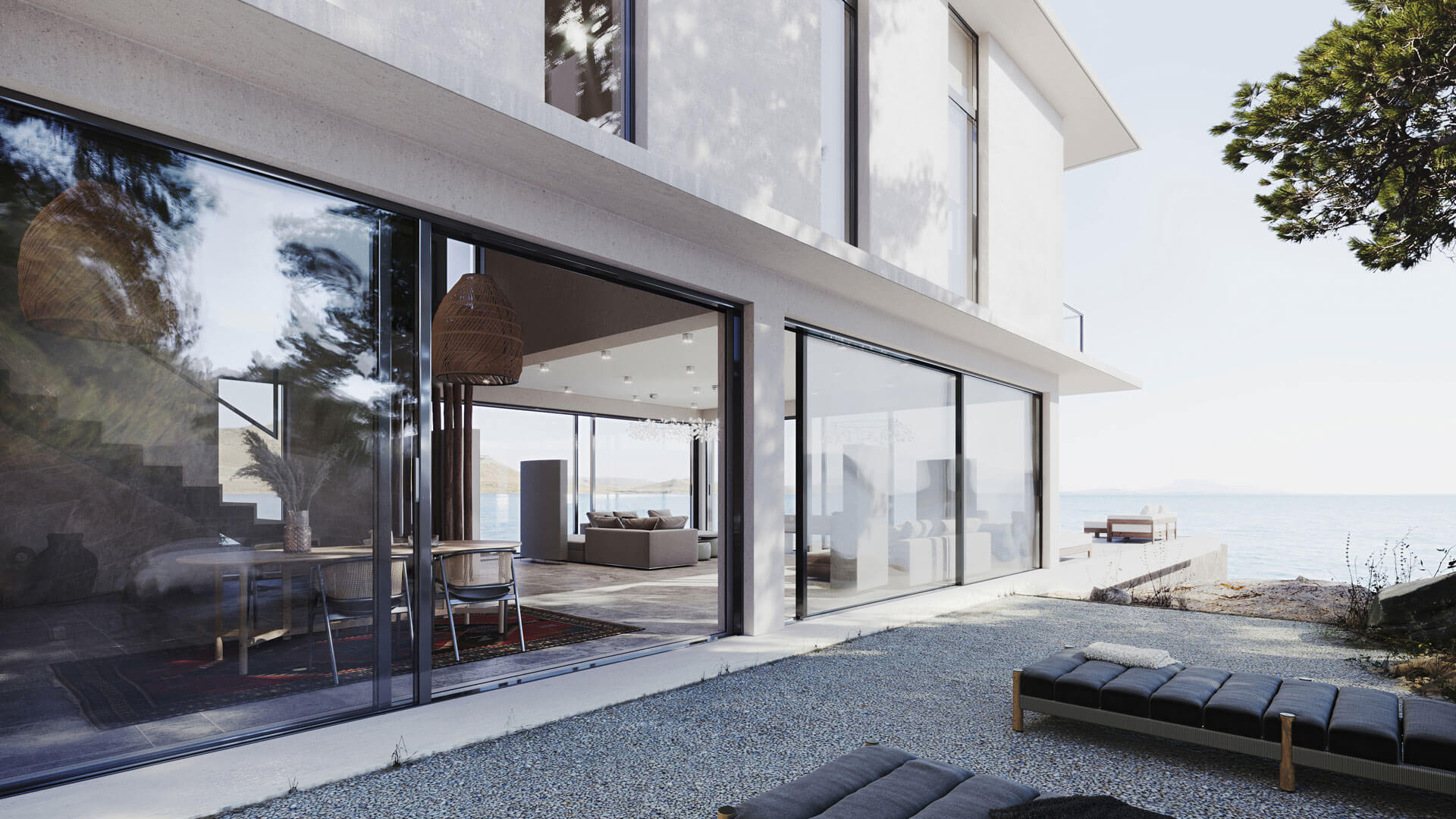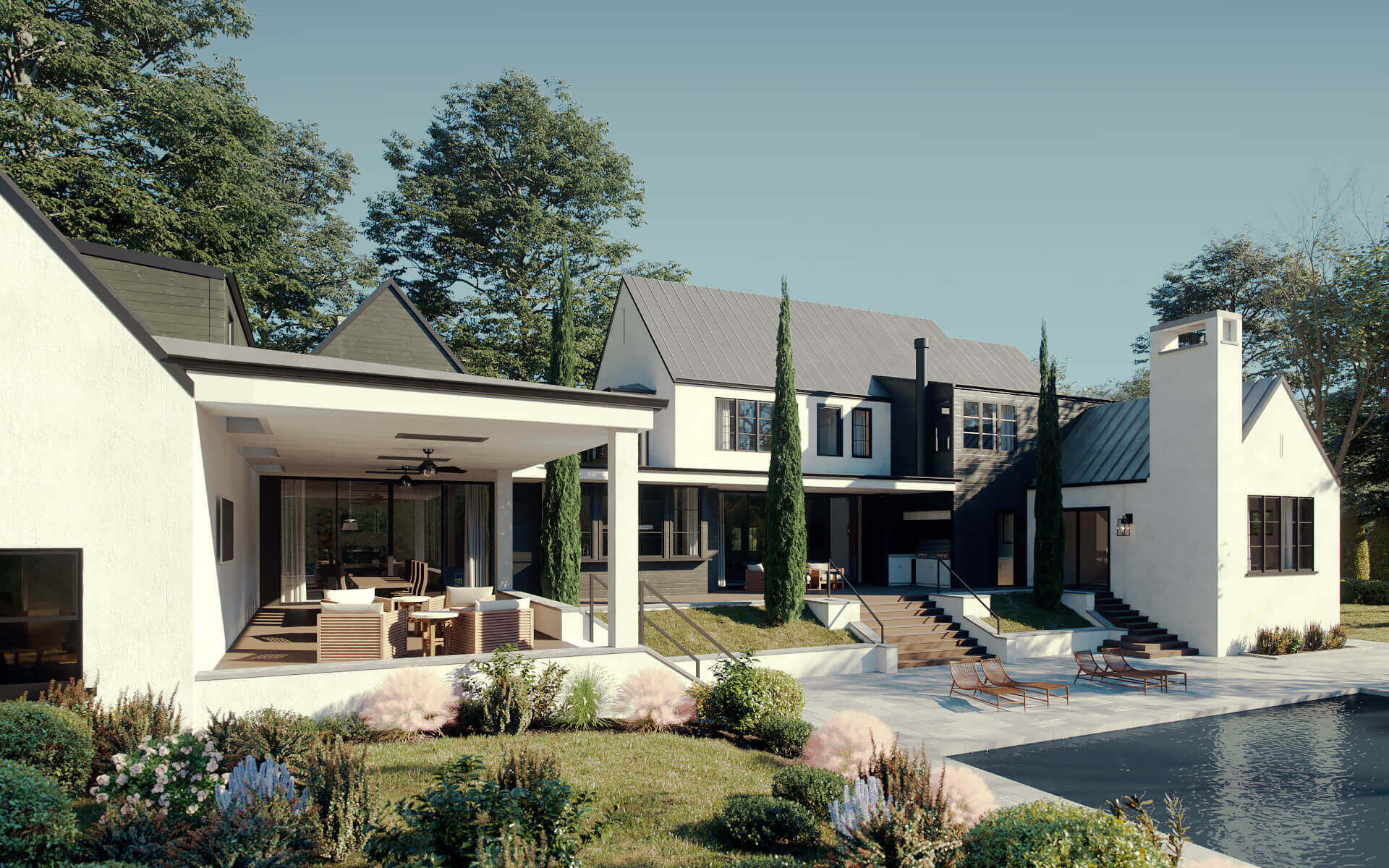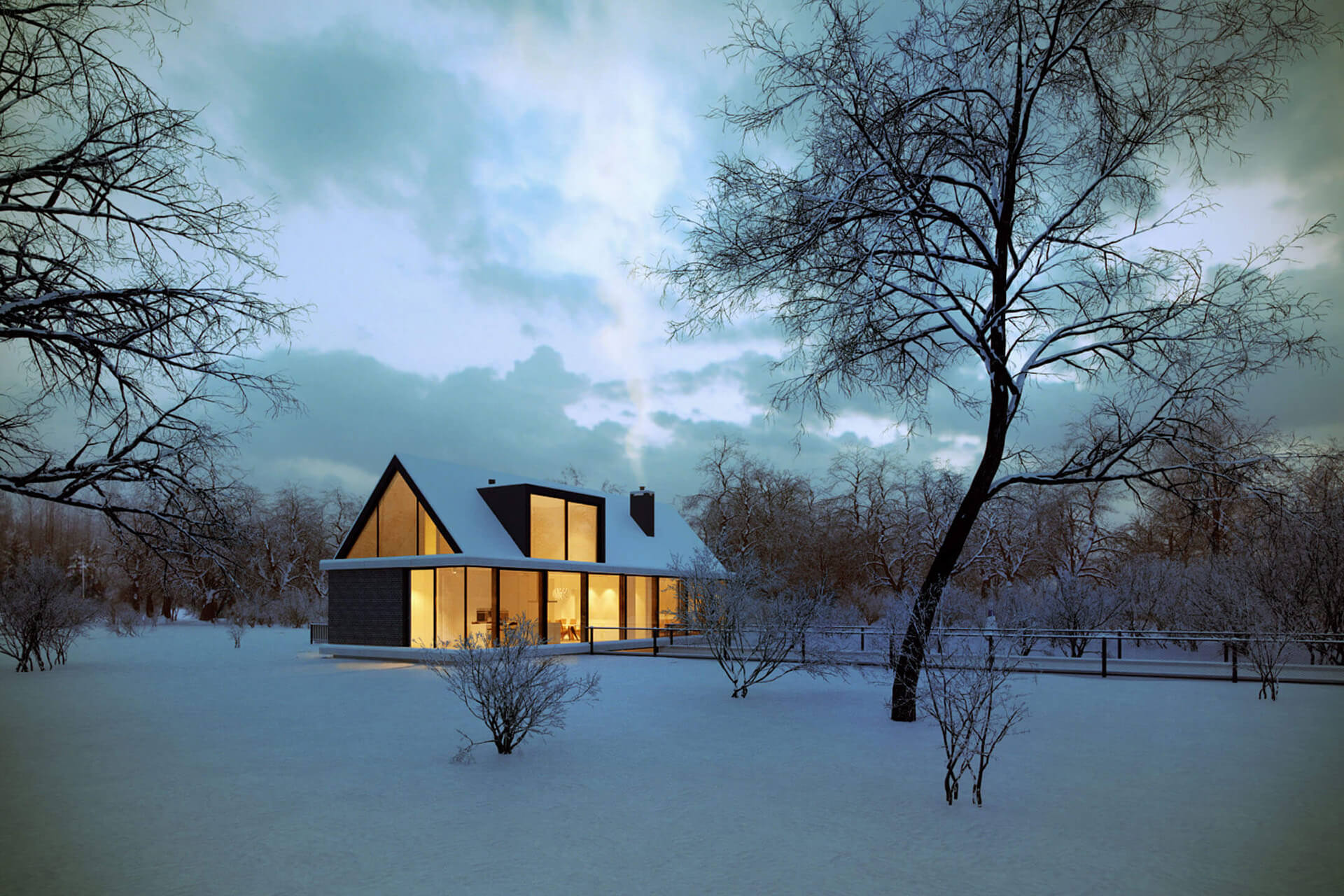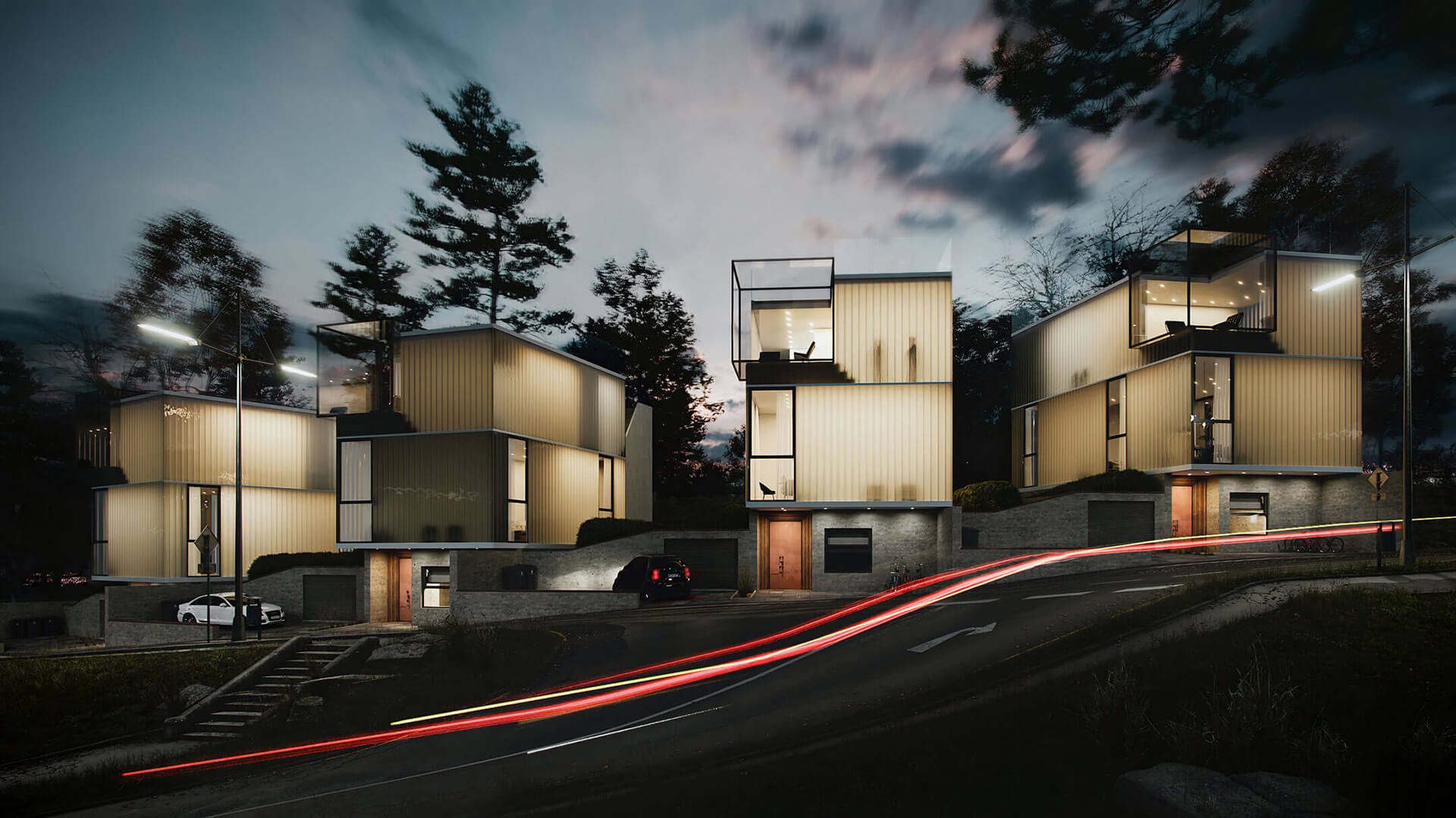To run a successful business, architects have to know how to engage clients on all stages of their customer journey — from the awareness stage to the project approval. And to do that, they need powerful visual tools. Traditional means such as drawings, sketches, and photographs are of little help here. Even the most skilled and talented architecture expert would find it hard to keep their prospects’ attention and win their loyalty with blueprints.
Photography can help but its power is limited. Using photos of the designs as marketing or presentation materials makes sense if the project is already complete. But what if the best works are still under construction or even exist only on drawings at the moment?
This is where architectural 3D visualization comes in. Digital renderings of designs can help architects communicate with prospective clients effectively. CGI allows for keeping their interest and increasing motivation to cooperate with an architecture professional on every step of their journey. How so? Let’s explore 5 ways 3D renders help architecs get leads and turn them into grateful clients!
#1. Digital renderings allow for grabbing the attention of prospects with catchy ads

At the earliest stage of the journey, the potential clients do not know about the services of a particular architect. Maybe, they haven’t even searched for one yet. But they have an issue they are starting to think about — for example, remodeling their home or having a new one built on the land they have just bought. That’s the time when the architecture professional needs to draw their attention with the catchy ads.
Digital renderings can be of great help here. CGI is a perfect option to get visuals for any kind of advertisement. Show-stopping photoreal 3D renderings of the architecture designs can serve as great content for professional social media profiles and a landing page. They can also be used to create stunning offline ads in print media like brochures and magazines, for city banners, flyers, and so on. Photoreal digital renderings allow to display finished properties as well as the expected results of projects that are still in the development and planning stage. Such advertisement materials help cement the brand in the minds of prospects and significantly improve business opportunities for an architecture expert.
#2. Digital visualization illustrates professional skills

Now, when the prospects are already aware of the architect’s services, they proceed to the evaluation stage. They want to know as much as possible about the expert and their competence. So, after a prospective client has seen the catchy ads and got interested, the next thing they would do is visiting the professional’s website to check their portfolio. And digital renderings can help impress them at this stage.
Make sure your exterior design project takes your clients’ breath away
A well-rounded portfolio needs to give a comprehensive understanding of the architect’s skills and areas of expertise. If the clients, for example, look for a professional that can masterfully design a traditional farmhouse or a Tudor-style home, they would want to see works in a similar style that an architect has created before. But it can happen that an architecture expert is working on a project of the required type that is not finished yet. Digital imagery can prove an expert’s skills in such a case. It allows an architecture professional to fill their portfolio with CG renderings that show the expected results of all the projects they specialize in even if they are currently not finished. So, the prospect will see that this expert is the true master of their craft.
#3. Digital 3D renderings aid in the project development stage

After the prospective customer makes sure that the architecture expert is a seasoned professional, they want to see what he or she can offer them for their project specifically. And if an architect presents the offer with the help of blueprints, no one can guarantee that the clients will get the idea. Sketches and drawings cannot be easily understood by people with no architectural background. So, with these materials, the prospects can end up ultimately rejecting the idea and deciding to consider other offers. Which means that the architect loses out on a vital business opportunity.
Digital 3D renderings can help prevent this outcome. They allow an architect to showcase all ideas clearly in CG images and videos that look completely life-like. So, with CGI, the customer will be able to see and easily understand every aspect of the project. Digital renderings display every feature of the exterior or interior design clearly so that the client will not miss a single selling point of the future house.
#4. CGI is effective in resolving disputes

After an architecture expert showcases the offer, it’s time to proceed to the negotiation stage. Now that the client has seen what the property will look like, they may have some objections about the solutions that have been offered, the budget, and other terms of the agreement. Coming to a satisfactory conclusion between the customer and architect can be a challenge at this stage. But digital renderings make it much easier, helping architect address all the client’s objections and solve misunderstandings. How so? Let’s see.
It happens that a homeowner has certain requirements that will definitely not work out well and insists that they have to be brought to life. But once the building is ready and the owner sees the consequences of their decision, they will be quick to blame the architect for disappointment. To prevent that, an expert can show them digital photoreal renderings of the expected result in advance so that they could change their mind before it’s too late.
Get your project estimated in just 1 hour - fill out this brief!
Another case is when a customer is hesitant about choosing an architectural solution, which slows down the work progress. In this situation, the architecture specialist can show them digital CGI with multiple design options. This makes it easy for the client to select the best one. That is how digital 3D rendering helps solve disputes arising in the course of project development.
#5. Photoreal 3D renderings strengthen the final project presentation

Presenting the finished design is an essential step here. To make it a success, an architecture professional can order digital renderings that display the upcoming house in all its splendor. CGI allows showcasing the future residence from various POVs, like close-ups, panoramic shots, and bird’s-eye views. Apart from this, a presentation can feature a digital animation demonstrating the project’s exterior in different seasons and times of the day. On top of that, it can include an interactive virtual tour to showcase every aspect of the interior design. So, even a picky customer is bound to be impressed with a project that is exhibited through well-made digital visuals.
Want to learn how much your project costs? See how we evaluate 3D rendering projects
3D renderings are the optimal tool to win over clients and influence prospects. Digital renders help create attention-grabbing marketing materials, demonstrate the architect’s expertise, and easily convey design ideas to the homeowners. 3D renderings are also useful in resolving disputes related to the project. On top of that, digital visuals help make a breathtaking final presentation of the design.
Want to get new leads and turn them into clients of your architecture firm easier than before? Contact ArchiCGI for professional architectural rendering services and we’ll help you achieve just that!

Catherine Paul
Content Writer, Editor at ArchiCGI
Catherine is a content writer and editor. In her articles, she explains how CGI is transforming the world of architecture and design. Outside of office, she enjoys yoga, travelling, and watching horrors.




Comments
Harold Fisher
Adrian
Bobby
Irma